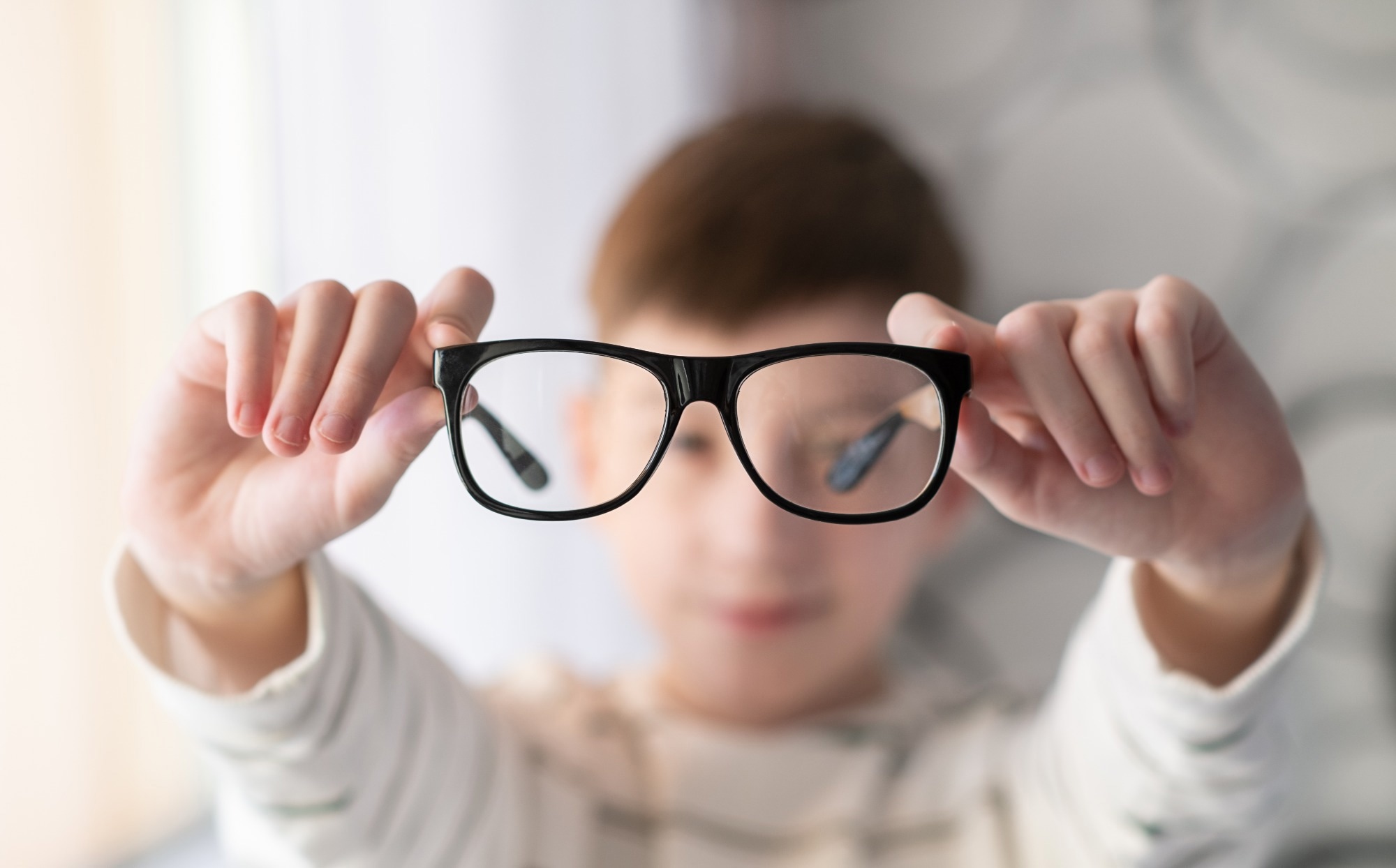New research uncovers how everyday screen time and reading behaviors could shape kids’ eye health, offering insights for early myopia prevention.
 Study: Thicker peripapillary choroid may be associated with behavioral factors in Tokyo’s children. Image Credit: Inna Kot / Shutterstock
Study: Thicker peripapillary choroid may be associated with behavioral factors in Tokyo’s children. Image Credit: Inna Kot / Shutterstock
A recent study published in the journal Scientific Reports found that behavioral factors may be associated with choroidal thickness (CT) in children.
Myopia prevalence has been increasing worldwide, especially in North America and East Asia. The incidence of pathological myopia and high myopia has also been growing globally, which may pose a threat in the future. High myopia can lead to several eye diseases, such as glaucoma, retinal detachment, myopic choroidal neovascularization, optic neuropathy, and myopic maculopathy.
Controlling myopia by one diopter (D) can decrease the incidence of glaucoma, myopic maculopathy, and retinal detachment by 17%, 37%, and 23%, respectively. Notably, the age at myopia onset correlates with its severity, with earlier onset ages associated with more severe myopia in later life. Thus, it is critical to control myopia progression from an early age to prevent severe myopia.
While the mechanisms of myopia progression are unclear, environmental factors, including outdoor activity time and near work, are implicated as being associated with myopia. Various studies have also found an association between choroidal thinning and myopia. As such, understanding how environmental factors influence CT could lead to the prevention and progression of myopia.
About the study
In the present study, researchers measured CT and surveyed lifestyle and other factors in children to evaluate the environmental factors influencing CT. This cross-sectional, school-based study was conducted at a single elementary school in Tokyo. Those undergoing treatment for myopia were excluded.
All subjects underwent ophthalmologic examinations, including measurements of refractive errors without cycloplegic agents and assessments of ocular biometric factors, viz., axial length (AL), corneal curvature, lens thickness, CT, central corneal thickness, and anterior chamber depth. Choroidal thickness measurements were taken around noon to account for diurnal fluctuations. The choroid was divided into the C0, C1, and C2 regions. C1 and C2 were subdivided into inferior, nasal, superior, and temporal quadrants.
Further, children and parents completed a questionnaire on near work activities, family history of myopia, and outdoor activity time. For near-work activities, subjects were asked to estimate reading time, reading distance, computer usage time, and smartphone/tablet/gaming device usage time. Only right eye data were used for analyses. CT was compared among nine regions using Tukey’s test.
Next, correlations of the C0 region CT with the spherical equivalent (SE) and AL were examined using Pearson’s correlation coefficients. Linear and multiple regression analyses were performed. In addition, participants were stratified into two groups based on the outdoor activity time of two hours and the reading distance of 30 cm; the Mann-Whitney U test was used to compare CT for each group.
Findings
The study included 119 children, including 66 boys, with a mean height of 129.5 cm. Myopia prevalence was nearly 80%. The average SE, AL, and C0 CT were -1.57 D, 23.39 mm, and 297.73 μm, respectively. The temporal region had the thickest CT across regions. C0 CT showed a significant positive correlation with SE, such that each 1D increment in myopia decreased CT by 8 μm.
Conversely, C0 CT had a negative correlation with AL, with each 1 mm increase in AL decreasing the CT by 24.1 μm. Moreover, computer usage time was significantly associated with CT in the C0 and C2 inferior regions. Environmental factors were not associated with CT in the C2 temporal and all C1 regions. The smartphone/gaming device/tablet usage time was significantly associated with CT in the C2 superior and inferior regions. Notably, this finding contrasts with some prior studies, as the paper cites a systematic review showing conflicting evidence on screen time’s role in myopia.
Reading distance was significantly associated with CT in the C2 nasal and superior regions. Further, AL was associated with CT across regions, excluding the C2 nasal region. In analyses stratified by reading distance, subjects with a reading distance ≥ 30 cm had a thicker CT in all regions than those with a shorter reading distance (< 30 cm). However, stratification by outdoor activity time did not yield clear trends in CT.
Conclusions
In summary, childhood CT was significantly correlated with AL and refractive error. An association was observed between a longer computer usage time and a thinner choroid in the C2 inferior and C0 regions. Conversely, spending more time on smartphones, gaming devices, or tablets was linked to a thicker choroid in the C2 inferior and superior regions.
Furthermore, there was an association between a longer AL and a thinner choroid across regions, excluding the C2 nasal region. Meanwhile, a longer reading distance was associated with a thicker choroid in the C2 nasal and superior regions. These findings suggest that reading distance and time spent on digital devices may impact the choroid.
The authors note limitations, including the study’s single-school cohort (limiting generalizability) and reliance on non-cycloplegic refraction, which might overestimate myopia prevalence. Prospective studies are needed to confirm causality.